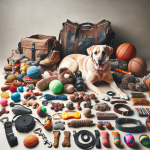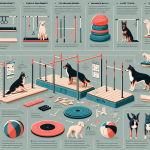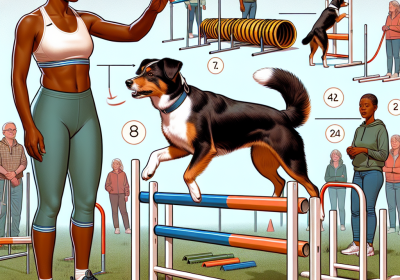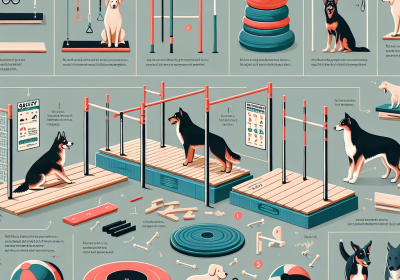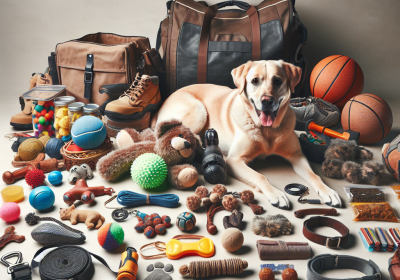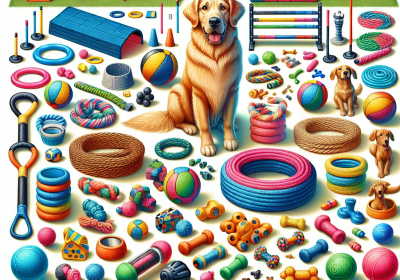DIY Canine Freework Equipment
Table of Contents
- Building Your Own Canine Agility Course: A Step-by-Step Guide
- DIY Canine Enrichment Toys: Affordable and Fun Ideas
- Creating a Homemade Canine Obstacle Course for Mental Stimulation
DIY Canine Freework Equipment refers to the creation of homemade tools and apparatus designed to engage and stimulate dogs through various physical and mental activities. This equipment can include items such as agility obstacles, sensory enrichment toys, and interactive puzzles, all crafted from readily available materials. The goal of DIY canine freework is to provide dogs with opportunities to exercise, explore, and problem-solve, thereby enhancing their overall well-being and strengthening the bond between pet and owner. By utilizing everyday objects and simple construction techniques, pet owners can create a diverse and enriching environment tailored to their dog’s unique needs and preferences.
Building Your Own Canine Agility Course: A Step-by-Step Guide
Creating a canine agility course at home can be a rewarding endeavor for both you and your dog. Not only does it provide a stimulating environment for your pet, but it also strengthens the bond between you and your furry friend. To begin with, it is essential to understand the basic components of a standard agility course. These typically include jumps, tunnels, weave poles, and contact equipment such as A-frames and seesaws. By constructing these elements yourself, you can tailor the course to suit your dog’s specific needs and abilities.
First and foremost, safety should be your primary concern. Ensure that all materials used are non-toxic and sturdy enough to withstand your dog’s weight and activity level. For jumps, PVC pipes are an excellent choice due to their durability and ease of assembly. You can create adjustable jumps by cutting the pipes into various lengths and using connectors to form the frame. To make the jump bars, simply slide smaller PVC pipes through the frame at different heights. This allows you to modify the difficulty level as your dog progresses.
Next, consider incorporating tunnels into your course. Tunnels can be made from flexible, lightweight materials such as collapsible fabric or plastic. These materials are not only easy to store but also provide a safe and enjoyable experience for your dog. When setting up the tunnel, ensure that it is securely anchored to prevent it from moving during use. You can achieve this by placing sandbags or other heavy objects at the entrance and exit points.
Weave poles are another essential component of a canine agility course. To construct these, you will need a series of evenly spaced poles, which can be made from PVC pipes or wooden dowels. Insert the poles into a sturdy base, such as a length of wood or a strip of heavy-duty plastic, ensuring that they are securely fixed and evenly spaced. The standard distance between poles is approximately 24 inches, but you can adjust this based on your dog’s size and skill level.
In addition to jumps, tunnels, and weave poles, contact equipment such as A-frames and seesaws can add an extra layer of challenge to your course. Building an A-frame requires two large wooden panels connected by a hinge at the top. The panels should be covered with a non-slip surface to ensure your dog’s safety. To create a seesaw, you will need a sturdy plank balanced on a central pivot point. Again, ensure that the surface is non-slip and that the pivot point is stable and secure.
Once you have constructed the various elements of your agility course, it is crucial to arrange them in a logical sequence that allows for smooth transitions between obstacles. Start with simpler tasks, such as jumps and tunnels, before progressing to more complex challenges like weave poles and contact equipment. This gradual progression will help build your dog’s confidence and skills.
In conclusion, building your own canine agility course can be a fulfilling project that provides numerous benefits for both you and your dog. By carefully selecting materials and constructing each element with safety in mind, you can create a customized course that meets your dog’s needs and abilities. With patience and practice, you and your furry friend will enjoy countless hours of fun and exercise together.
DIY Canine Enrichment Toys: Affordable and Fun Ideas
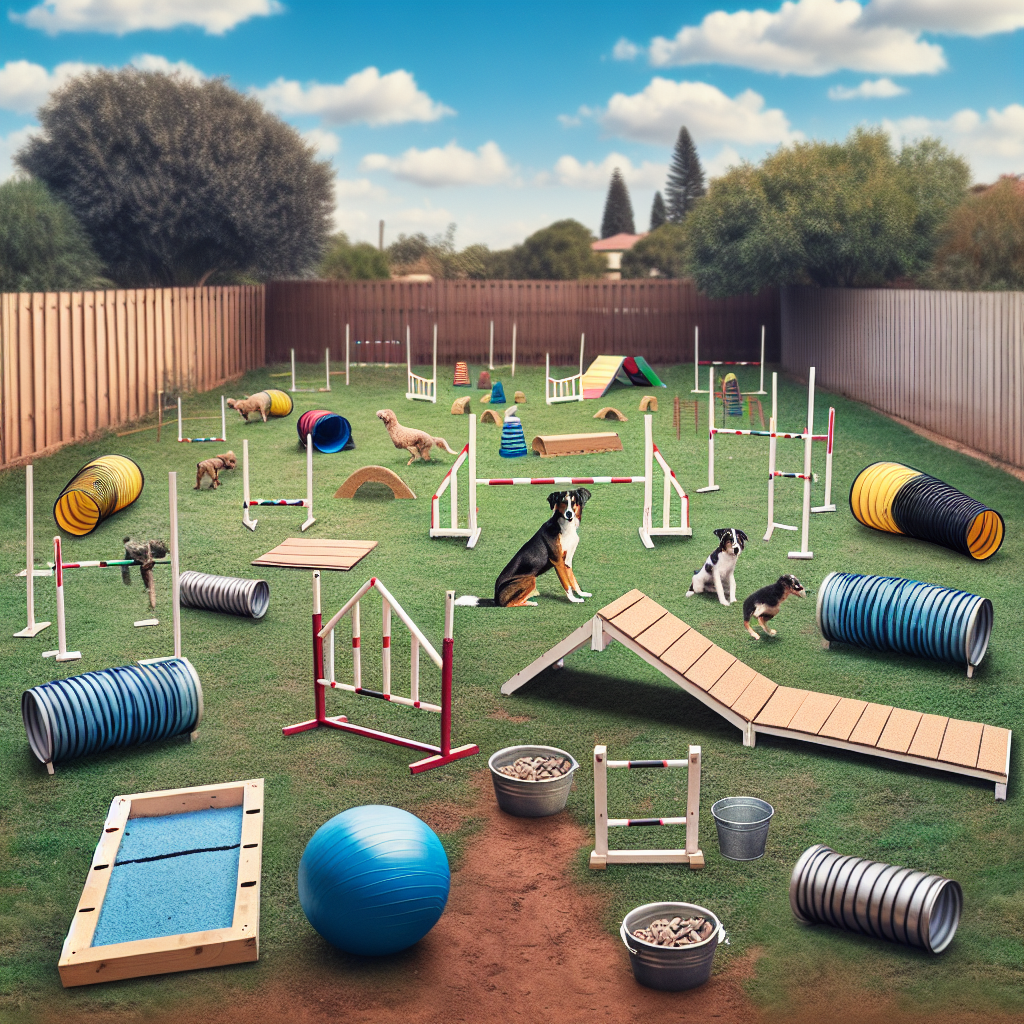
Creating DIY canine enrichment toys can be a rewarding and cost-effective way to provide mental and physical stimulation for your dog. One particularly engaging form of enrichment is canine freework, which involves setting up an environment where dogs can explore and interact with various objects and textures. This type of activity not only keeps dogs entertained but also helps to build their confidence and problem-solving skills. By using everyday household items, you can easily create a variety of freework equipment that will keep your dog engaged and happy.
To begin with, consider using cardboard boxes of different sizes. These can be arranged in various configurations to create tunnels, mazes, or simply scattered around for your dog to explore. Cardboard is an excellent material because it is readily available, inexpensive, and safe for dogs to interact with. Additionally, you can enhance the experience by placing treats or toys inside the boxes, encouraging your dog to use their sense of smell and problem-solving abilities to find the hidden rewards.
Another simple yet effective piece of equipment is a towel or blanket. By laying it flat on the ground or draping it over furniture, you can create a new texture for your dog to investigate. For added enrichment, you can hide treats or toys within the folds of the fabric, prompting your dog to use their nose and paws to uncover the hidden treasures. This not only provides mental stimulation but also encourages natural foraging behaviors.
Plastic bottles can also be repurposed into engaging freework equipment. By removing the labels and ensuring there are no sharp edges, you can fill the bottles with kibble or small treats. As your dog interacts with the bottle, they will need to figure out how to manipulate it to release the treats. This type of activity promotes problem-solving and can help to slow down fast eaters, making mealtime more enriching.
In addition to these items, consider using PVC pipes to create more complex freework setups. By cutting the pipes into various lengths and connecting them with elbow joints, you can design intricate structures for your dog to navigate. You can also drill holes in the pipes and fill them with treats, adding an extra layer of challenge. PVC pipes are durable and easy to clean, making them a practical choice for long-term use.
Furthermore, incorporating natural elements such as branches, leaves, and rocks can enhance the sensory experience for your dog. These items can be collected during walks or from your backyard and arranged in a designated freework area. The different textures and scents will provide a rich sensory environment, encouraging your dog to explore and engage with their surroundings.
Lastly, it is important to regularly rotate the items in your freework setup to keep the experience fresh and exciting for your dog. By changing the configuration and introducing new objects, you can maintain your dog’s interest and prevent boredom. Always supervise your dog during freework sessions to ensure their safety and to provide guidance if needed.
In conclusion, creating DIY canine freework equipment is an affordable and enjoyable way to enrich your dog’s life. By using everyday household items and natural elements, you can design a stimulating environment that promotes mental and physical well-being. With a little creativity and effort, you can provide endless opportunities for your dog to explore, learn, and thrive.
Creating a Homemade Canine Obstacle Course for Mental Stimulation
Creating a homemade canine obstacle course for mental stimulation can be a rewarding endeavor for both you and your dog. Not only does it provide an excellent outlet for your dog’s energy, but it also enhances their cognitive abilities and strengthens the bond between you and your furry friend. To begin with, it is essential to understand the concept of canine freework, which involves allowing dogs to explore and interact with various objects and obstacles at their own pace. This type of activity encourages problem-solving and decision-making, which are crucial for mental stimulation.
To create an effective homemade obstacle course, you need to gather a variety of materials that can be repurposed into engaging obstacles. Common household items such as cardboard boxes, PVC pipes, old tires, and wooden planks can be transformed into challenging and stimulating equipment. For instance, cardboard boxes can be used to create tunnels or hiding spots, while PVC pipes can be assembled into hurdles or weave poles. Old tires can serve as jumping obstacles, and wooden planks can be used to construct balance beams. By utilizing these materials, you can design a diverse and dynamic course that caters to your dog’s physical and mental needs.
Once you have gathered the necessary materials, it is important to plan the layout of your obstacle course. Consider the size and breed of your dog, as well as their current skill level, when designing the course. Start with simple obstacles and gradually increase the difficulty as your dog becomes more confident and proficient. For example, you might begin with a basic tunnel made from a cardboard box and progress to a more complex series of weave poles constructed from PVC pipes. This gradual progression ensures that your dog remains engaged and motivated, while also preventing frustration or injury.
In addition to the physical layout of the course, it is crucial to incorporate elements that stimulate your dog’s senses. Scented objects, textured surfaces, and varying heights can all contribute to a more enriching experience. For example, you can place treats or toys inside the cardboard boxes to encourage your dog to explore and use their sense of smell. Similarly, incorporating different textures, such as a soft blanket draped over a hurdle or a rough surface on a balance beam, can provide additional sensory stimulation. By engaging multiple senses, you can create a more immersive and mentally stimulating environment for your dog.
As you introduce your dog to the obstacle course, it is important to monitor their progress and adjust the course as needed. Pay attention to your dog’s body language and behavior, and be prepared to modify the obstacles if they appear too challenging or too easy. Positive reinforcement, such as treats and praise, can be used to encourage your dog and build their confidence. Additionally, it is essential to ensure that the course remains safe and secure. Regularly inspect the equipment for any signs of wear or damage, and make any necessary repairs to prevent accidents.
In conclusion, creating a homemade canine obstacle course for mental stimulation is a valuable and enjoyable activity for both you and your dog. By utilizing common household materials and incorporating elements that engage your dog’s senses, you can design a dynamic and challenging course that promotes cognitive development and physical fitness. With careful planning and attention to your dog’s needs, you can create an enriching environment that fosters a strong bond and enhances your dog’s overall well-being.
Read more about Canine Freework
Equipment Needed for Canine Freework
– Essential Equipment for Canine Freework
– DIY Canine Freework Equipment
– Safety Measures for Canine Freework Equipment
– Different Brands and Options for Canine Freework Equipment
– How to Properly Use Canine Freework Equipment


